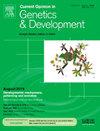Novelty versus innovation of gene regulatory elements in human evolution and disease
IF 3.6
2区 生物学
Q2 CELL BIOLOGY
引用次数: 0
Abstract
It is not currently understood how much of human evolution is due to modifying existing functional elements in the genome versus forging novel elements from nonfunctional DNA. Many early experiments that aimed to assign genetic changes on the human lineage to their resulting phenotypic change have focused on mutations that modify existing elements. However, a number of recent studies have highlighted the potential ease and importance of forging novel gene regulatory elements from nonfunctional sequences on the human lineage. In this review, we distinguish gene regulatory element novelty from innovation. We propose definitions for these terms and emphasize their importance in studying the genetic basis of human uniqueness. We discuss why the forging of novel regulatory elements may have been less emphasized during the previous decades, and why novel regulatory elements are likely to play a significant role in both human adaptation and disease.
人类进化和疾病中基因调控元件的新颖性与创新性
目前还不清楚人类的进化在多大程度上是由于修改了基因组中现有的功能元素,而不是从无功能的 DNA 中伪造出新的元素。许多旨在将人类血统中的基因变化归因于其导致的表型变化的早期实验,都集中在改变现有元素的突变上。然而,最近的一些研究强调了从人类血统的非功能序列中伪造新基因调控元件的潜在难度和重要性。在这篇综述中,我们将基因调控元件的新颖性与创新性区分开来。我们提出了这些术语的定义,并强调了它们在研究人类独特性遗传基础中的重要性。我们讨论了为什么新型调控元件的形成在过去几十年中可能不太受重视,以及为什么新型调控元件可能在人类适应和疾病中发挥重要作用。
本文章由计算机程序翻译,如有差异,请以英文原文为准。
求助全文
约1分钟内获得全文
求助全文
来源期刊
CiteScore
7.90
自引率
0.00%
发文量
102
审稿时长
1 months
期刊介绍:
Current Opinion in Genetics and Development aims to stimulate scientifically grounded, interdisciplinary, multi-scale debate and exchange of ideas. It contains polished, concise and timely reviews and opinions, with particular emphasis on those articles published in the past two years. In addition to describing recent trends, the authors are encouraged to give their subjective opinion of the topics discussed.
In Current Opinion in Genetics and Development we help the reader by providing in a systematic manner:
1. The views of experts on current advances in their field in a clear and readable form.
2. Evaluations of the most interesting papers, annotated by experts, from the great wealth of original publications.[...]
The subject of Genetics and Development is divided into six themed sections, each of which is reviewed once a year:
• Cancer Genomics
• Genome Architecture and Expression
• Molecular and genetic basis of disease
• Developmental mechanisms, patterning and evolution
• Cell reprogramming, regeneration and repair
• Genetics of Human Origin / Evolutionary genetics (alternate years)

 求助内容:
求助内容: 应助结果提醒方式:
应助结果提醒方式:


